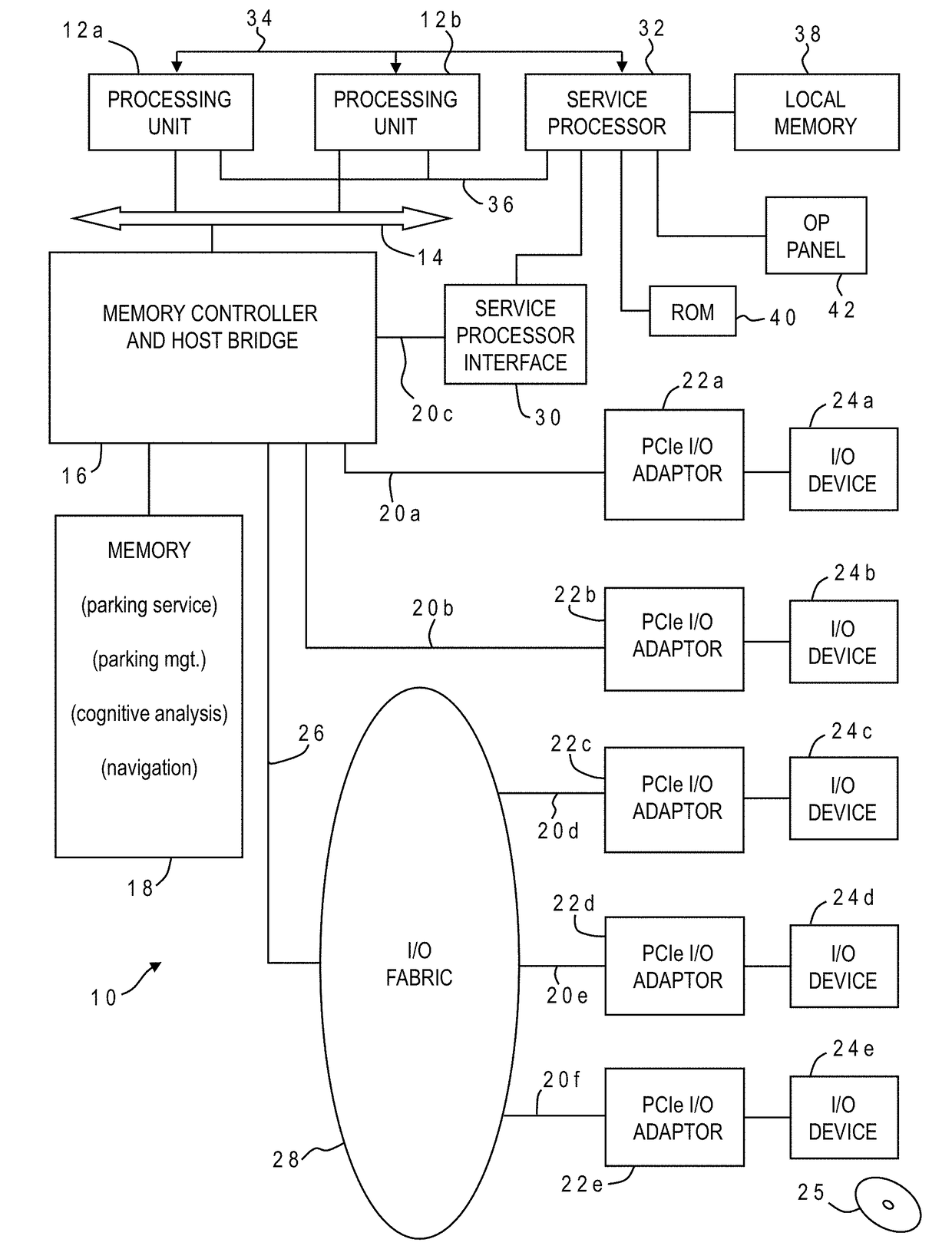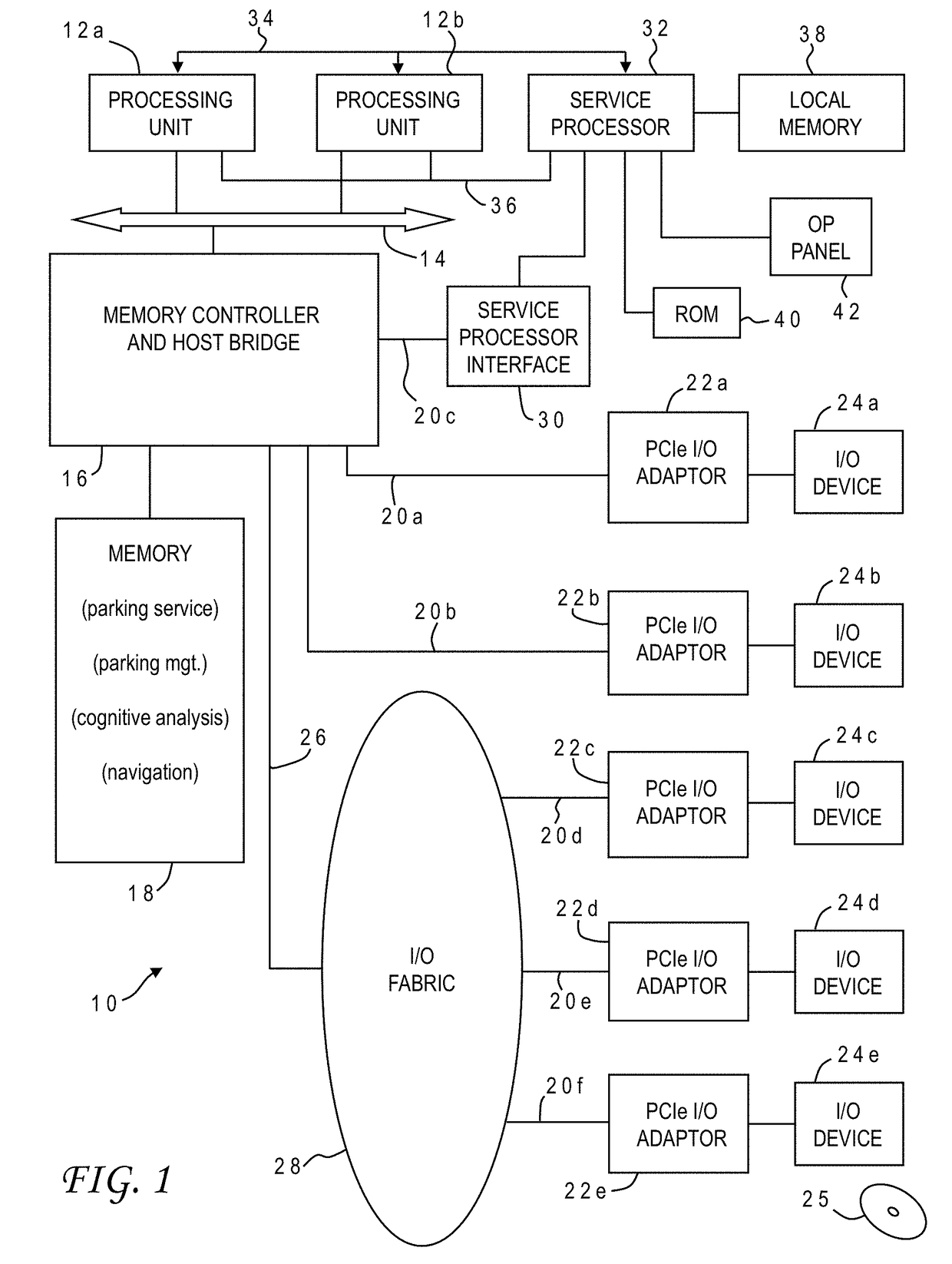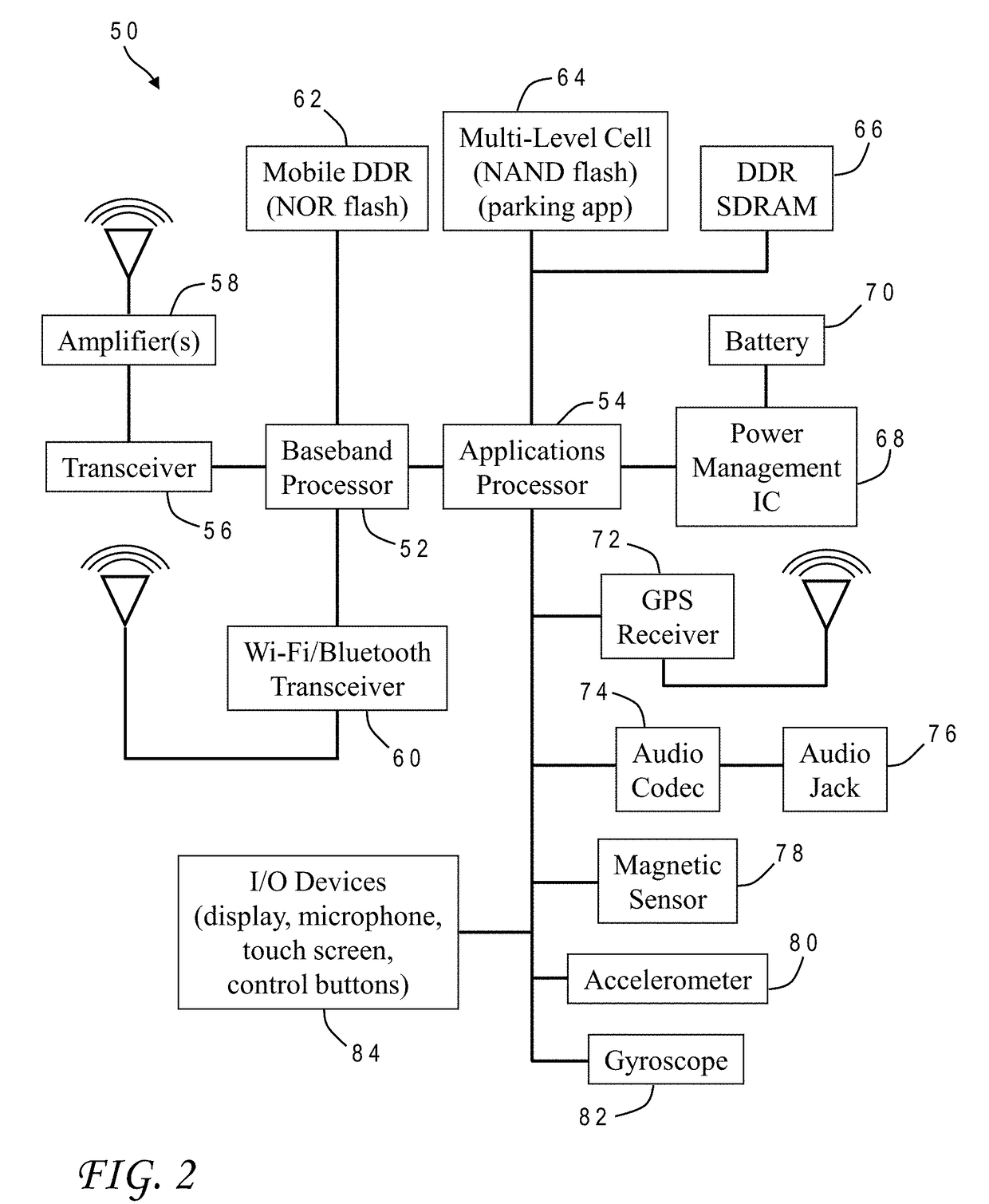Finding available parking spaces using cognitive algorithms
a technology of parking spaces and cognitive algorithms, applied in the field of transit, can solve problems such as crowded parking areas
- Summary
- Abstract
- Description
- Claims
- Application Information
AI Technical Summary
Benefits of technology
Problems solved by technology
Method used
Image
Examples
Embodiment Construction
)
[0022]Although several approaches have been devised to assist drivers in finding a parking space, there are still many problems and shortcomings. Some of these approaches require one driver informing another that he is exiting a parking location, which is both burdensome and sporadic. Other inventions in this area require users to select the parking space they wish to use, and then they are relayed the status of the spot (whether it is occupied or not), possibly with a time estimation of how long the spot will remain unoccupied. These inventions use location sensors in the car to detect if it is moving or not, and infers whether the spot it occupied is empty or not, respectively, so can be unreliable. Even when a driver does find a spot, she cannot guarantee that there is not a cheaper, safer, or closer spot to her destination.
[0023]It would, therefore, be desirable to devise an improved method of finding a parking spot for a motor vehicle which could provide optimal suggestions wi...
PUM
 Login to View More
Login to View More Abstract
Description
Claims
Application Information
 Login to View More
Login to View More - R&D
- Intellectual Property
- Life Sciences
- Materials
- Tech Scout
- Unparalleled Data Quality
- Higher Quality Content
- 60% Fewer Hallucinations
Browse by: Latest US Patents, China's latest patents, Technical Efficacy Thesaurus, Application Domain, Technology Topic, Popular Technical Reports.
© 2025 PatSnap. All rights reserved.Legal|Privacy policy|Modern Slavery Act Transparency Statement|Sitemap|About US| Contact US: help@patsnap.com



